F/Lt Jan Robert ALEXANDER, DFC, DFM
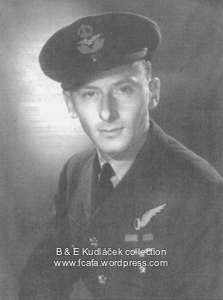
* 06/06/22, Teplice-Šanov.
† 12/01/12, Reading.
Československý zahraniční odboj dlouhá desetiletí býval (a dosud stále bývá) poněkud stereotypně líčen jako boj „Čechů a Slováků“. Přitom se mnohdy přehlíží fakt, že zde byli v nemalých počtech zastoupeni rovněž Rusíni, Židé a do určité míry také demokraticky a „československy“ smýšlející Němci, Maďaři a příslušníci dalších etnik.
The Czechoslovak resistance abroad for decades has been (and still is) a bit stereotyped as a struggle ´between Czechs and Slovaks´. It is often overlooked that considerable numbers were also represented by Ruthenians, Jews and to some extent also democratically and ‚pro- Czechoslovakia‘ minded Germans, Hungarians and members of the other ethnic groups.
Mezi takto zapomenuté „Čechoslováky“ patřil i muž, jenž odešel na věčnost ve věku nedožitých 90 roků na počátku tohoto roku. Válečný bombardovací letec, který byl naší historiografií nejen nedoceněný, ale až do minulé dekády i prakticky neznámý.
Among these forgotten “Czechoslovaks” was a man who passed away, aged 90, earlier this year. A wartime bomber airman who was not only unappreciated by Czech history, but also practically unknown till the last decade.
Do té doby se vždy zpravidla uvádělo, že největší počet bombardovacích náletů na nepřátelské území – celkem 45 – vykonal velitel 311. čs. bombardovací peruti, W/Cdr (v čs. hodnosti škpt.let.) Josef Ocelka, DFC. Dotyčný jistě patří k nejvýznamnějším příslušníkům čs. válečného letectva – byť nikoli pouze z uvedeného důvodu. Přestože Jan Robert Alexander jich podnikl více než dvojnásobné množství, patří k nejméně známým československým letcům ve Velké Británii a až donedávna nebyl zmiňován v žádné odborné historické publikaci.
Until that time it was always stated that the highest number of bombing raids of enemy territory – a total of forty-five – had been achieved by W/Cmdr Josef Ocelka DFC, Commanding Officer of 311 Czechoslovak Squadron. The person concerned must be one of the leading members of the Czechoslovak wartime RAF – though not for that reason. Whilst Jan Robert Alexander undertook more than twice that number of bombing raids he is one of the least known Czechoslovak airmen who was in Great Britain and until recently he was not even mentioned in any book on Aviation history.
Skutečnost, že šlo o skromného muže, netoužícího po slávě, a že nebyl pilotem, nýbrž navigátorem, jimž se nedostávalo takové publicity, může být jen částečnou odpovědí na tuto otázku. Podstatnějším důvodem je fakt, že nikdy nesloužil u československé jednotky, nýbrž výhradně u jednotek britských.
The fact is he was a modest man not seeking fame, and was not a pilot, but a navigator who lacked such exposure may be only a part of the answer to this question. A more substantial reason is that he never served with Czechoslovak units but only with British Squadrons.
Vůbec nejpodstatnějším důvodem je však skutečnost, že nebyl v kmenové evidenci Inspektorátu čs. letectva ve Velké Británii, a to i přesto, že jeho pracovníkům bylo známo, že dotyčný je „Czechoslovak subject“ a že o jeho úspěších bylo londýnské MNO pravidelně informováno. Každopádně Alexanderových plných 101 bojových vzletů k akcím, při nichž ve vzduchu strávil více než 480 operačních hodin, zůstává mezi bombardovacími letci z Československa bezkonkurenčním výkonem.
One of the main reasons for this is because no personnel record was held for him by the Czechoslovak Air Force Inspectorate in Great Britain, despite them knowing that he was ´Czechosloslovak subject´ and was regularly informed, by the Ministry of Defense, in London of his success. In any case, Alexander completed 101 combat operations in which he totaled 480 operational hours, an achievement unmatched by any other Czechoslovak bomber airman.
Přesto zpočátku vůbec nic nenasvědčovalo tomu, že se stane tak vášnivým sběratelem odlétaných bojových letů a nalétaných operačních hodin. A už vůbec ne to, že se stane jedním z mála, který tento svůj koníček přežije.
Nevertheless, initially nothing indicated his becoming such an enthusiastic collector of combat missions and flying hours. And not at all the fact, that he will be one of the few who survived this hobby.
Narodil se 6. června 1922 jako Hans Robert Alexander (křestní jméno si pozměnil až při svém pozdějším vstupu do RAF). Pocházel z poměrně dobře situované středostavovské německojazyčné židovské rodiny. Mladý Hans studoval na německém gymnáziu v rodných Teplicích-Šanově, ale po Mnichovu, kdy Teplice připadly k území odstoupeném nacistickému Německu, a po následné křišťálové noci bylo zřejmé, že pro rodinu nastávají velmi zlé časy.
He was born on 6 June 1922 as Hans Robert Alexander (he changed his first name only when he volunteered for the RAF). His was born into a relatively well-off middle class German-speaking Jewish family. The young Hans studied at the German Grammar School in the Šanov district of at his native town of Teplice, but after the Munich Agreement when the Teplice Region was ceded to the Reich and the following‚ ‘Kristallnacht’ it became obvious, that very difficult times were ahead for the family.
Otec jej proto raději rychle poslal dostudovat do Anglie; školu mu zaplatil až do června 1940. Tím mu nepochybně zachránil život. Většina zbylých členů rodiny a příbuzenstva to štěstí neměla…
His father quickly arranged for for him to go to England complete his studies, who had pre-paid his tuition fee till late June 1940. No doubt his life was saved in like this. The majority of the members of his family and relatives were not so lucky.
Po úspěšně složené maturitě na Margate College pracoval krátce na jedné farmě, ale v té době již naplno zuřila válka. Britské ostrovy tehdy čelily dosud bezprecedentnímu německému bombardování a inteligentnímu a zdravému mladíkovi se příčilo zůstat jen bezbranným divákem. „Brzy po maturitě jsem se rozhodl sehrát ve válce větší roli,“ vzpomínal po mnoha letech. „Nabízeli mi vstup do českého letectva, ale já se hned po příjezdu rozhodl natrvalo zakotvit v Anglii, takže jsem zvolil možnost vstoupit přímo do RAF.“
After graduating from his College in Margate, he worked briefly on a farm, but at that time the war was raging at full swing. The British Isles faced unprecedented German bombing these days and an intelligent young man of good health opposed an idea of remaining a mere defenseless spectator. „I made my decision to play a greater role at war shortly having passed my graduation exam´, he recalled after many years. ´I was offered entry to join the Czechoslovak Air Force, but I had decided, on my arrival, to remain permanently in England for the rest of my life, so I opted for the opportunity to enlist into the RAF“.
Do svazku Dobrovolnické zálohy Královského letectva (RAF VR) vstoupil ve svých 19 letech, konkrétně 8. srpna 1941, a to v nejnižší hodnosti Aircraftman No 2 Class (vojín-nováček). Byl určen k výcviku pro odbornost navigátora bombardovacího letounu. Praktický letecký výcvik zahájil u 5. AOS (Air Observer´s School) na letišti Jurby na ostrově Man (prodělával ho od 5. června do 31. srpna 1942), operační výcvik absolvoval na Wellingtonech u 29. OTU (Operational Training Unit) na letišti North Luffenham v hrabství Rutland (3. září 1942 – 11. ledna 1943) a nástavbové školení u 1660. HCU (Heavy Conversion Unit) ve Swinderby v hrabství Lincolnshire (od 12. ledna do 19. února 1943).
He joined the RAF Voluntary Reserve on 8 Aug 1941 aged 19 at the lowest rank of AC2. He was selected for navigator training on bomber aircraft. He began his practical flight training at No 5 AOS (Air Observer School) at Jurby airfield, on the Isle of Man (from 5 June to 31 August 1942). His completed his operational training on Wellington bombers with No 29 OTU (Operational Training Unit) at North Luffenham, Rutland from 3 Sep 1942 to 11 Jan 1943, followed by further training at No 1660 HCU at Swinderby, Lincolnshire from 12 January to 19 February 1943.
Dne 20. února 1943 byl se svou osádkou, jíž velel Sgt D. N. Britton, přidělen ke 106. bombardovací peruti, operující ze základny Syerston (hrabství Nottinghamshire). Po vykonání deseti nočních náletů jej pak s celou osádkou 12. dubna 1943 přemístili k 83. bombardovací peruti, sídlící na základně Wyton (hrabství Huntingdownshirre). U obou jednotek bojoval jako navigátor na čtyřmotorových bombardovacích letounech Lancaster B.Mk.I a B.Mk.III, s nimiž podnikal noční nálety na Německo a okupovaná území.
On Feb 20, 1943 he and his crew, captained by Sgt D. N. Britton, were posted to 106 Bomber Sqn, stationed at Syerston, Nottinghamshire. Having completed ten-night raids, the crew was posted to 83 Sqn based at Wyton, Huntingdonshire. He was a navigator in four-engined Lancaster B Mk I and Mk III in both squadrons, making made night raids on Germany and occupied territories.

83 Sqn Lancaster B Mk1 bomber
Zatímco však první z nich podléhala 5. skupině, druhá již patřila pod 8. skupinu Bomber Command, konkrétně k nedávno vytvořeným jednotkám tzv. Pathfinder Force, jimž byly přednostně svěřovány nejzodpovědnější úkoly – značkování cílů pro hlavní bombardovací svazy za pomoci palubních radiolokátorů H2S, umožňující identifikaci určeného cíle bez vnější viditelnosti.
Whereas the former squadron was under No 5 Bomber Group, the latter was a part of 8 Bomber Group, in particular the recently formed Path Finder Force, who were entrusted with a most important role – marking the targeti for the following main bomber force using H2S onboard radar which could identify the intended target even in nill visibility.
To, co jej u bojové jednotky čekalo, byla především povinnost odlétat tzv. operační turnus (Operational Tour). Jeho délka nebo rozsah nebyla u Bomber Command zpočátku nijak pevně stanovena. Zprvu však panoval obyčej, že po odlétání (a chce se rovnou dodat přežití) 30 bojových letů byl letec odeslán na šestiměsíční odpočinek do některé z neoperačních sfér (nejčastěji v roli instruktora).
On active service with an operational unit he was requireded to undertake Operational Tours. Initially the length of these tours was not fixed by Bomber Command. At first it was customary to fly 30 operational missions followed by a six moths rest period in an non-operational unit (usually in the role as an instructor).
Vycházelo se z toho, že odlétání zhruba 30 misí představuje přibližně padesátiprocentní šanci na přežití (resp. zajetí). Teprve 27. ledna 1941 bylo na příslušném odboru Air Ministry rozhodnuto, že u Bomber Command (jakož i u Fighter Command a Army Co-operation Command) bude operační turnus činit jednotně 200 odlétaných operačních hodin. Další vývoj války, prodlužující se dolet nových letounů jakož i nabyté zkušenosti a z toho vyplývající rozbory si však vynutily určité korektury a diferenciaci i v rámci jednotlivých velitelství.
It was considered, that in flying 30 missions there was approximately fifty percent chance of survival (or captivity). It was not until 27 January 1941 did the relevant Department at the Air Ministry decided that Bomber Command (as well as Fighter Command and Army Co-Operation Command) would have a standard operational tour of 200 operational hours. Later developments in the war when new longer-range bombers were used lessons learned and the results analysied, necessitated rethinking and differentiating between Commands.
Proto 8. května 1943 stanovilo Air Ministry nová pravidla. Pokud jde o Bomber Command, stanovilo délku trvání operačního turnusu následovně: první turnus 30 bojových misí, druhý turnus 20 bojových misí. Výjimku z toho tvořili právě příslušníci Pathfinder Force, kteří měli odlétat 45 akcí (původně se uvažovalo o 60, ale limit byl snížen pro nedostatek dobrovolníků).
On 8 May 1943, the Air Ministry established new rules. As far as Bomber Command was concerned is, the duration of an operational tour was as follows – the first one thirty combat missions sorties, the second twenty combat missions. An exception to this were the members of Path Finder Force were exempted from this limit who were to undertake forty-five missions (originally considered at sixty but the limit had to be decreased due to lack of volunteers).
Následovala dlouhá série několika desítek dalších náročných a krajně nebezpečných nočních operací. Každá z nich znamenala nejen překonávání nástrah nepřátelské protiletadlové palby, nočních stíhačů a světlometů i rozmarů počasí, ale především nekonečnou bitvu s vlastním strachem, neboť pravděpodobnost vlastního přežití se s přibývajícími akcemi tenčila.
A long series of several dozen other difficult and extremely perilous nighttime operations. Each of them meant not only overcoming the danger of enemy anti-aircraft fire, night fighters, searchlights and unpredictable weather, but above all never-ending battle with their own fear, because the probability of surviving was dwindling with the increasing number of missions.
„Hranice mezi životem a smrtí je velmi tenká,“ napsal fatalisticky jeden z Alexandrových současníků. „Když sami žijete na pokraji smrti, je to jako kdyby ti, co už odešli, jenom nastoupili do předchozího vlaku stejným směrem, jakým brzy pojedete i vy, protože ten příští vlak už určitě stihnete…“
´A boundaries between life and death is very thin´ wrote fatalistically one of Alexander´s contemporaries. ´While living on verge of death, it is as if those who had already met their death, had just before left on the previous train in the same direction, and how soon you will be able to go because the next train you will definitely be able to catch‘
Přestože J. R. Alexander měl mnohokrát namále, patřil k těm šťastnějším. Osud mu dopřál přežít a tím také příležitost dále zdokonalovat své schopnosti. To mu vyneslo nejprve povýšení na Flight Sergeanta (rotný) a ještě před koncem turnusu byl navržen k udělení DFM (Distinguished Flying Medal). „Flight Sergeant Alexander nyní dokončil 36 akcí proti nepříteli, z nichž 25 odlétal v rámci Pathfinder Force,“ čteme v návrhu na udělení DFM z 19. října 1943, který tehdy podal velitel 83. peruti, G/Cpt John H. Searby, DSO, DFC, jenž se proslavil jako Master Bomber při legendárním útoku na německé výzkumné středisko v Peenemünde.
Though J. R. Alexander´s had many narrow escapes, he was one of the lucky ones. Fate allowed him to survive and so he was given an opportunity to further hone his skills. This earned him his first promotion to the rank of Flight Sergeant and prior to completing his tour of duty, he was awarded the DFM. ´F/Sgt Alexander had completed thirty-six operations against the enemy, twenty-five of which were with the Path Finder Force“ we can read in the application the DFM award submitted by the Commander of 83 Sqn, G/Cpt John H. Searby, DSO, DFC on 19 October 1943. The C/O became famous as a Master Bomber in a legendary air raid on the German research center at Peenemuende.
„Většinu z těchto akcí odlétal jako značkař a jeho osádka byla v této práci nepochybně jednou z nejúspěšnějších. Jeho navigační schopnosti byly zpravidla určující a jeho rozhodnost a oddanost službě chvályhodná.
´Most of these operations were flown by him as a marker and doing so his crew no doubt one of the most successful was. His navigational skills were usually decisive and his determination and devotion to duty is praiseworthy.
Při třech různých příležitostech, provádějíce úkoly vizuálního značkaře, jeho letoun zajišťoval fotografickou evidenci, což probíhalo tváří v tvář velmi těžké obraně – jednou nad Mannheimem a dvakrát nad Hamburkem. Nedávno, prováděje útok na těžce bráněný cíl, byl jeho letoun zachycen do těžké koncentrace kuželů světlometů, které jeho kapitána úplně oslepily. Letoun byl zasažen flakem a poškozen. F/Sgt Alexander opustil své místo navigátora a stojíce za pilotem jej dokázal dovedně navést mimo světlometné kužely. Jeho duchapřítomnost a chladnokrevnost v nouzi největší měrou přispěla k bezpečnému návratu letounu s minimálním poškozením…“
On three various occasions, while performing the role of a pathfinder, his aircraft was gathering photographic evidence in the face of heavy defences – once over Mannheim and twice over Hamburg. Recently, while carrying out an attack on a heavily defended target, his aircraft was caught by cones of searchlights which dazzled the pilot completely. The bomber was hit by flak and damaged. F/Sgt Alexander left his navigator seat and standing behind the pilot he skilfully managed to direct him out of the searchlight cones. His presence of mind and coolness during that emergency contributed to the safe return of the aircraft with minimal damage.
Udělení zasloužené DFM schválil britský panovník 27. ledna 1944, tedy právě v době, kdy Jan R. Alexander dokončil operační turnus. Do té doby vykonal na Wellingtonech 29. OTU a Lancasterech 106. a 83. peruti dohromady 48 nočních bombardovacích náletů v celkovém čase 284.40 operačních hodin. Společně se svými druhy tedy mohl oslavit své osobní vítězství nad statistickými čísly, hovořícími o tom, že pravděpodobnost přežití turnusu u tehdejšího Bomber Command byla méně než poloviční. Vyznamenání DFM bylo rovněž dáno na vědomí československým úředním místům a posléze bylo zveřejněno ve Sborníku důvěrných výnosů a nařízení londýnského MNO. O dva dny později, 29. ledna 1944, následoval Alexanderův odchod na předepsaný a zasloužený šestiměsíční odpočinek. V té době se dočkal i povýšení do nejnižší důstojnické hodnosti Pilot Officer (poručík), a to se zpětnou platností od 9. září 1943.
The awarding of a well deserved DFM was approved by His Majesty on 27 Jan 1944 at the time of Jan Alexander had completed his second tour of duty. He had flown Wellington aircraft of 29 OTU as well as Lancasters with 106 and 83 Sqns on a total of forty-eight-night bombing raids amassing 284.40 flying hours. Together with comrades, he could celebrate his personal victory over the statistics which gave that the probability of survival in Bomber Command of that time was less than fifty percent. The DFM award was also made known to the Czechoslovak authorities and was later was published in the Czechoslovak records of confidential decrees and orders of the Ministry of National Defense in London. Two days later, on 29 Jan Alexander left the squadron for his prescribed well deserved six-month rest. He was promoted to the rank of P/O, the lowest officer rank, which was backdated to 9 Sep 1943.
Oproti původnímu předpokladu, že se stane instruktorem u 17. OTU v Upwoodu nastoupil jako instruktor u amerického bombardovacího letectva, dislokovaného ve Velké Británii. Přidělili ho na leteckou základnu USAAF Alconbury, ležící asi 20 kilometrů jižně od Petersborough v hrabství Huntingdownshire. Jeho úkolem bylo předávat své, nyní již poměrně bohaté zkušenosti se značkováním cílů za pomoci palubního radaru H2X, což byla americká obdoba britského přístroje H2S, který on sám dobře znal ze svého působení u 83. peruti Pathfider Force.
Contrary the original assumption that he would be posted to 17 OTU, at Upwood, as an instructor he became an instructor with the USAAF who were now deployed on British soil. He was posted to the USAAF airbase at Alconbury located about thirteen miles south of Peterborough, Huntingdownshire. his task was to pass on his fairly extensive experience of radar using the onboard H2X radar which was the American version of the British H2S which he knew well from his time while serving with 83 Sqn in the Path Finder Force.
V následujících pěti měsících nalétal na amerických čtyřmotorových bombardovacích strojích dalších celkem 123 neoperačních letových hodin, z toho 60 na letounech B-17 Flying Fortress (z toho 24 v noci) a 63 na B-24 Liberator (14 v noci). Po dobu svého instruktorského působení v Alconbury se dne 9. března 1944 dočkal povýšení na Flying Officera (nadporučík).
During the next five months he flew four-engined American aircraft on non operational flights totalling 123 flying hours, 60 hrs were on B17 Flying Fortress’s (including 24 hours at night) and 63 hours on B24 Liberators (14 hours at night) . On 9 March 1944, whilst an instructor at Alconbury he received his promotion to the rank of Flying Officer.
Před ukončením předepsaného odpočinku se rozhodoval co dál. Podobně jako celá řada dalších letců podlehl vábení elegantního a rychlého dvoumotorového stroje De Havilland Mosquito, stroje, který již tehdy provázela vynikající reputace. Ač nenesl žádnou hlavňovou výzbroj, díky své rychlosti měl pověst takřka nezranitelného bombardovacího letounu.
Prior to completing this scheduled non-operational rest period stint he was considering what to do next. Like many other airmen, he was lured by an elegant and fast twin-engined De Havilland Mosquito which had achieved an excellent reputation. Although the fuselage was carried no armament, thanks to its speed it had the reputation of being an almost invincible bomber.
K nezbytnému přeškolení na tento typ letounu nastoupil 21. června 1944 u No 1655 Mosquito Training Unit (1655. MTU) na letišti Warboys (asi 10 kilometrů severovýchodně od města Huntingdown ve stejnojmenném hrabství). Zde utvořil osádku se svým budoucím pilotem, jímž se stal F/Lt William Edward Montague Eddy, DSO, DFC (* 5. 8. 1909, Penkridge, Staffordshire), syn ředitele železniční společnosti British South American Railways v Argentině.
On 21 June 1944 he was posted to 1655 Mosquito Training Unit (1655 MTU) at Warboys, about seven miles north-east Huntington, Huntingtonshire, to train for conversion to this aircraft type. Here he crewed up with his future pilot F/Lt William Edward Montague Eddy DSO DFC (born 5 August 1909 at Penkridge, Staffordshire/, the son of a director of British South American Railways in Argentina.
Po vypuknutí války se mladý William, jenž tehdy řídil svou velkou farmu v Argentině, přihlásil k RAF a s manželkou Blackie a dětmi přicestoval do Velké Británie. Předtím, než se dostal na Mosquita, bojoval „Bill“ Eddy také na Lancasterech (u 103. peruti) a při svém prvním operačním turnusu přežil sestřel flakem nad Ardenami. Zachránil se na padáku, podařilo se mu vyhnout zajetí a za pomoci belgicko-francouzské podzemní organizace Comête se z Belgie přes Francii dostal do Španělska a Gibraltaru a odtud zpátky do Británie.
After the outbreak of WWII, young William, who ran a large farm of his own in Argentina, volunteered for the RAF and together with a wife Blackie and children arrived in UK. Before flying Mosquitos, ´Bill´Eddy had also piloted Lancasters 103 Sqn and on his first tour of duty had been shot down by flak over Ardennes. He bailed out, and with the assistance of the Belgian-French Comet Line resistance group had managed to evade capture and cross through Belgium and France to reach Spain and Gibraltar from where he returned back to Britain.
„Bill Eddy byl jedním z nejstatečnějších pilotů, s nimiž jsem se za války setkal,“ napíše Alexander po letech o muži, s nímž měl v budoucnu absolvovat dalších 51 bojových akcí.
´Bill Eddy was one of the bravest pilots with whom I met during the wrote Alexander some decades later, about the man with whom he flew another fifty one combat operations with.
Svůj druhý operační turnus nastoupil F/O Alexander 17. července 1944, kdy byl společně s Eddym přemístěn ke 139. bombardovací peruti (Jamaica), operující na Mosquitech verzí B.Mk.IX, B.Mk.XVI, B.Mk.XX a B.Mk.XXV ze základny Upwood v podřízenosti již zmíněné 8. skupiny Bomber Command. I zde si vedl mimořádně dobře, takže byl povýšen na Flight Lieutenanta (kapitán) se zpětnou platností od 9. září 1944 a o několik měsíců později byl vyznamenán DFC (Distinguished Flying Cross), který byl důstojnickým ekvivalentem poddůstojnické DFM.
F/O Alexander´s second operational tour started on 17 June 1944, when he was posted with Eddy to 139 Sqn ‚ Jamaica“ flying Mosquito types B.MK IX, B.Mk XVI, B.Mk XX and B.Mk XXV stationed at Upwood. The squadron was part of 8 Group of Bomber Command. Here to he did extremely well and was promoted to the rank of F/Lt retroactively dated to 9 September 1944 and some months later was awarded the DFC which was the equivalent to the non-commissioned DFM.
„Tento důstojník nyní dokončil sedmdesát operačních letů proti nepříteli,“ píše se v návrhu na udělení DFC, podaném 17. září 1944 velitelem 139. peruti. „…S touto perutí tento důstojník provedl dalších 22 operačních letů, z toho dvacet ve funkci značkaře se speciálním vybavením. F/O Alexander je vynikajícím navigátorem a operátorem speciálního vybavení. Je přesný ve značkování, což ve vysokém standardu v mnohých případech potvrdily i cílové fotografie…“
´This officer completed seventy operations against the enemy´ is written in the citation for the award for a DFC, submitted on 17 September 1944 by 139 Sqn´s Commanding Officer. ´…With this squadron, this officer made a further twenty-two operations, twenty of them in the capacity of a pathfinder with special equipment. F/O Alexander is an excellent navigator and operator of special equipment. He is accurate about marking, the high standard of which was confirmed in many cases confirmed by photo-reconnaissance.“
Udělení DFC bylo schváleno 26. ledna 1945. Za poznámku jistě stojí skutečnost, že Jan R. Alexander se tak stal prvním z pouhých tří československých letců, jimž byla kombinace vyznamenání DFM a DFC udělena.
His DFC award was approved on 26 January 1945. It worthy to note the fact that Jan R. Alexander became the first of only three Czechoslovak airmen were who awarded both the DFC and also the DFM.
Cíle pro hlavní bombardovací svazy značkoval do 17. prosince 1944, kdy po úspěšném návratu ze svého 90. operačního letu byl přemístěn k nově budované 162. bombardovací peruti. Po svém zániku ve Středomoří se nově formovala na základně Bourn (hrabství Cambridgeshire). Do své výzbroje přebírala rovněž Mosquita, konkrétně verzí B.Mk.XX a zejména B.Mk.XXV, obě pocházející z kanadské licenční produkce.
He continued marking targets for bombing by the main force until 17 December 1944 when he had completed his 90th operational flight. He was then posted to 162 Sqn, a bomber unit that had been annihilated in the Mediterranean Theatre of Operations. This unit was being re-formed at Bourn, Cambridgeshire and using Mosquito B.Mk XX and B.Mk XXV aircraft which had been built, under license, in Canada.
Do svých nových začátků dostala i několik zkušených osádek s „evropskými“ bojovými zkušenostmi, m.j. právě od 139. peruti. Náležela sice rovněž k 8. skupině Bomber Command, ale na rozdíl od 139. peruti již nepatřila k Pathfinder Force, nýbrž k lehkému nočnímu údernému letectvu (Light Night Striking Force), znepokojujícímu protivníka téměř každou noc. Při celkem 913 operačních vzletech, které do konce války vykonala, ztratila 162. peruť pouze jediný letoun, což z ní učinilo jednotku Bomber Command s percentuelně vůbec nejnižšími ztrátami (0,1 %).
The re-formed 162 Sqn was also manned by several experienced crews too who were experienced in the ‚European‘ combat zone. Like 139 Sqn, 162 Sqn was also part of 8 Group of Bomber Command, but whilst 139 Sqn had been a Pathfinder Force, 162 Sqn was a Night Striking Force which attacked the enemy nearly every. The squadron made a total of 913 operational take-offs until the end of hostilities. During this time it lost only one aircraft which made this squadron to have a loss rate of only 0.1%, the lowest in Bomber Command.
U nové jednotky se nyní již velice zkušený F/Lt Alexander stal populární a respektovanou osobností. „Všichni jsme ho znali pod přezdívkou Alex,“ vzpomínal W/Cdr Peter A. C. McDermott, DFC, DFM. „Když se 162. peruť koncem prosince 1944 znovu formovala, S/Ldr W. E. M. Eddy, s nímž Alex létal jako navigátor, byl jmenován velitelem A-letky a já velel B-letce. Pod velením W/Cdr J. D. Boltona a jako součást Light Night Striking Force jsme byli šťastnou perutí. Alex byl jejím velmi oblíbeným členem a – jak mi Bill – říkal, i velmi dobrým navigátorem.
In the new unit, the very experienced F/Lt Alexander became a popular and respected figure. ´We all knew him by his nickname ‚Alex‘ recalled W/Cdr Peter A.C. Mc Dermott DFC, DFM. ´When 162 Sqn being re-formed in late December 1944, S/Ldr W.E.M. Eddy, Alex´s pilot, was appointed Leader of ‚A‘ Flight and me of ‚B‘ Flight. We were a lucky squadron commanded by W/Cdr J. D. Bolton and as part of Light Night Striking Force, we were a lucky squadron. Alex was a very popular member of 162 Sqn and – as I was told by Bill – a very good navigator too.
Létali jsme na Mosquitech Mk.25, což byla kanadská varianta verze Mk.9, ale s motory Packard Merlin 225 (občas s nimi byly problémy, například při startu a přistání). Mk.25 neměla přetlakovou kabinu, takže jsme létali maximálně ve 27 000 stopách (přičemž bombardování cílů se obvykle dělo z 25 000 stop), zatímco šťastnější perutě měly přetlakovou variantu Mk.16, s níž mohly do 32 000 stop. Nosili jsme 2000 liber pum (čtyři 500liberních), zatímco Mk.16 normálně nosily jednu 4000liberní, tzv. Blockbuster.
We flew Mosquitos Mk XXV which was a Canada made variant of the Mk IX, but powered by Packard Merlin engines (/now and then we experienced problems with them, eg. while taking off and landing). The cabin of Mk XXV was not pressurized so we flew up to 27,000 ft (whilst bombing targets usually at 25,000 ft), whereas the more lucky squadrons, with pressurised Mk XVI’s, would operate up to 32,000 ft. Our bomb load was of 2,000 lbs – four bombs of 500 lbs, in comparison with one of 4,000 pounds, called Blockbuster, used by the Mk XVI.
S výjimkou dvou nocí, vyčleněných pro výcvik, peruť každou noc posílala do akce dvanáct letounů. Nasazení osádek se dělo tak, že létaly střídavě každou druhou noc a pak dvě noci za sebou. Velitelé letek a velitel peruti létali s menší frekvencí, ale byli vždy přítomni na briefingu a odletu ostatních do akce. Jeden z velitelů letek měl pak vždy službu na kontrolní věži a velitel peruti byl po ruce vždycky.
With the exception of two nights allocated for for training the squadron sent twelve aircraft into action every night. The crews were deployed every second night and then on two consecutive nights. Flight Leaders and the squadron‘s Commanding Officer flew less frequently but were always present at briefings and take-offs. One of the Flight Leaders was always on duty in the control tower and the squadrons Commander was always at hand.
Během své služby u Bomber Command Alex odlétal více než 100 operačních misí… “
During his service with Bomber Command Alex flew more than a hundred operational missions.
V rámci 162. peruti F/Lt Jan R. Alexander, DFC, DFM stačil do konce války vykonat ještě několik dalších nočních bombardovacích náletů. Po dokončení třetího turnusu – měl tehdy za sebou dohromady 100 bojových akcí (jako operační mu jich však bylo oficiálně započítáno 98) – byl odeslán 22. ledna 1945 opět na odpočinek. Ten tentokráte trval jen dva měsíce. Na konci dubna se totiž ke své 162. peruti vrátil, aby se v noci z 2. na 3. květen 1945, kdy bombardoval severoněmecký Kiel, účastnil vůbec posledního náletu válečného Bomber Command.
Serving with 162 Sqn F/Lt Jan R. Alexander DFC, DFM managed to make several more night bombing raids until the end of hostilities. Having completed his third tour of duty – he had flown in a hundred operational flights by his own records (but only 98 were officially designated to him) – he was sent, on 22 January 1945, for a rest. This time it lasted for only two months. At the end of April he returned to 162 Sqn and on the night of 2/3 May 1945, he bombed the harbour at Kiel, North Germany. This was to be the last bombing mission of the war to be undertaken by Bomber Command.
Tím uzavřel svůj impozantní válečný účet, který do té doby činil celkem 972.35 letových hodin, z toho 577.55 v noci. Pokud jde o operační létání, vzlétl k celkem 101 bombardovacím náletům, z nichž jako operační mu jich bylo oficiálně započítáno 99. V jejich průběhu nalétal celkem 480.20 operačních hodin, naprostou většinu v noci. Takovou bilancí se nemohl pochlubit žádný jiný čs. občan, sloužící u Bomber Command.
This completed his impressive wartime score which totalled 972.35 flying hours, 577.55 of which were at night. As far as operational flying was concerned, he had flown a total of 101 bombing raids, of which 99 were officially counted. became airborne for a hundred and one bomb raids, of which were ninety-nine officially counted for him. He had flown a total of 480.20 operational hours, the vast majority of these at night. No other Czechoslovak airmen who served in Bomber Command can claim a record like this.
Zprávy o své rodině neměl dlouhých šest roků, ale příležitost k návštěvě Československa se mu naskytla až tři měsíce po skončení války. Stalo se tak 13. srpna 1945, shodou okolností ve stejný den, kdy na ruzyňském letišti přistáli příslušníci čs. perutí RAF se svými stíhacími Spitfiry a bombardovacími Liberatory. Téhož dne se na letišti Croydon dostal do dopravní Dakoty a po mezipřistání ve Frankfurtu nad Mohanem přistál v Praze. Ve staré vlasti se zdržel týden a skutečnost předčila ta nejhorší očekávání. Vzpomíná opět W/Cdr Peter A. C. McDermott, DFC, DFM:
He had been deprived of news about his family for six long years, but had an opportunity to visit Czechoslovakia some three months after the end of hostilities. That occurred on 13 August, by sheer coincidence on the same day, when the Czechoslovak squadrons landed with their Spitfires and Liberators to Ruzyne airbase, Prague. On the same day he had boarded a DC3 Dakota transport aircraft at Croydon and after an en-route stop at Frankfurt, Germany, landed in Prague. He stayed in his homeland for a week and the reality exceeded his worst expectations. W/Cdr Peter A. C. Mc Dermott, DFC, DFM recalls again:
„Po skončení války, hned jak to okolnosti dovolily, jsme Alexovi vyjednali let do Prahy, aby zde a v okolí strávil několik dní a zapátral po svých blízkých. Zpátky se vrátil úplně zdrcený. Pokud si dobře vzpomínám, řekl mi, že ze 48 rodinných příslušníků a příbuzných přežil jen jediný. Chudák Alex. Kdyby před válkou neodjel do Spojeného království, byl by patrně mezi těmi, kteří se nevrátili.“
After VE Day as soon as the circumstances allowed, we organised a trip to Prague for Alex and there he spent several days searching for loved ones. He came back completely crushed. If I can remember correctly of his 48 family members and relatives he had been the only one to survive. Poor Alex. If he did not leave for the United Kingdom prior to WWII he probably would be among those who did return.
O tom, že po válce zůstane ve Velké Británii natrvalo, uvažoval J. R. Alexander již v jejím průběhu. Když zjistil, že byl tak brutálním způsobem zbaven odpovědnosti vůči svým blízkým, tak se ve svém rozhodnutí jen utvrdil. Navíc mínil setrvat jako důstojník z povolání v řadách RAF. To však procházelo radikální poválečnou reorganizací a redukcí svých stavů. Musel se tedy smířit se snížením hodnosti na stupeň Flying Officer (od 19. června 1947), ale v rámci nové systemizace mu nakonec byla uznána poslední válečná hodnost Flight Lieutenant, přiznaná jako permanentní ke dni 23. listopadu 1948.
Already as WWII was progressing, J. R. Alexander was considering remaining on British soil forever. When he found out that he had been brutally deprived of responsibility towards his family, his decision was confirmed and he chose to remain as a career officer in the RAF. But RAF underwent radical post-war reorganisation and manpower reductions. This meant that he had to accept a demotion in rank to Flying Officer from 19 June 1947, but later, on 23 November 1948, in accordance to new regulations he was reinstated to his wartime rank of Flight Lieutenant.
Po rozpuštění 162. nastoupil 2. srpna 1946 službu u 107. bombardovací peruti. Představovala pro něj změnu hned v několika směrech. Předně neměla ve výzbroji Mosquita čistě bombardovacích variant, nýbrž Mosquita verze FB.Mk.VI, což byla stíhací-bombardovací varianta, která kromě pum nesla i střeleckou výzbroj. Přechod na ně však nepředstavoval žádný problém už jen proto, že na práci navigátora se toho tolik neměnilo.
Following the disbanding of 162 Sqn he was posted, on 2 August 1946, to 107 Bomber Squadron. This represented changes for him in several ways. Firstly the Mosquitos were not solely the bomber variant but FB. Mk.VI which was a fighter bomber – an aircraft with in addition to a bombload also carried armaments. Conversion to this type of aircraft was not so difficult as the Navigators role was not so different.
Podstatnější byl fakt, že jednotka nesídlila ve Velké Británii, nýbrž v okupovaném Německu, kde byla součástí Britského okupačního letectva (British Air Forces of Occupation, BAFO). Již od listopadu 1945 sídlila na mateřské základně Gütersloh. Své detašované části však měla postupně i na letištích Münster-Handorf, Wahn, dále na ostrově Sylt, v rakouském Klagenfurtu i v britském Manstonu a Odihamu.
The more significant difference was that the unit was not deployed on British soil but in occupied Germany as a part of British Air Forces of Occupation, BAFO. From Nov 1945, 107 Sqn was stationed at the Guetersloh airbase. Its detached flights were consecutively deployed at Muenster-Handorf, Wahn, Isle of Sylt, in Klagenfurt, Austria, and Manston and Odiham, UK.
Létání u 107. peruti sestávalo zejména z udržovacích a cvičných letů a ve spojovacích a kurýrních letech nejen po Německu a na Britské ostrovy, ale i do Rakouska, Itálie, Francie, na Maltu a do Egypta. Reorganizační změny nakonec postihly i 107. peruť, kterou v říjnu 1948 přeznačil na 11. peruť. U toho však F/Lt Alexander již nebyl, neboť 31. července 1947 u ní vykonal svůj poslední let a vrátil se do Velké Británie. Do té doby nalétal celkem 1358 letových hodin, z toho 751 ve dne a téměř 607 v noci.
Operations with No 107 Sqn consisted mainly of maintenance and training flights as well as liaison and courier trips not only within Germany or to the British Isles, but also to Austria, Italy, France, Malta and to Egypt. The reorganization also affected 107 Sqn too, resulted in it being redesignated to 11 Sqn in Oct 1948. But by then F/Lt Alexander was no longer with the squadron as he made his last operational flight 31 July 1947 and returned to Great Britain. He had amassed a total of 1358 flying hours, of which 751 were day and nearly 607 were at night.
V RAF zůstal sloužit i nadále, a to dokonce více než dvě další dekády. Mezitím se stačil oženit a s manželkou Pamelou měl postupně tři dcery. Pokud to bylo jen trochu možné, preferoval aktivní létání. Posledními bombardovacími typy, do jejichž kabin usedal, byly proudové Canberry a Vulcany. Aby dostál novým a stále náročnějším požadavkům na výkon služby, dále si zvyšoval kvalifikaci. Prodělal roční speciální nástavbový navigační kurz a poté i RAF Staff College, po jejímž absolvování byl 1. července 1954 povýšen do hodnosti Squadron Leader (major). O tři roky později navíc úspěšně završil studium na RAF College of Air Warfare (1957), počemž byl zařazen na různých štábních postech jak v zámoří, tak i na Britských ostrovech. K 6. červnu 1973 – ve svých právě dovršených 51 letech a po bezmála 32 letech služby, odešel Jan Robert Alexander na vlastní žádost do penze.
He remained in RAF service for more than two decades. During this time he married his wife Pamela and they had three daughters. If it had been possible he would have preferred active flying. The last bomber types he flew were Canberra and Vulcan jets. To meet the demands of the new and more sophisticated equipment he continued to upgrade his qualifications. He completed a year-long course for Special Navigation followed by RAF Staff College which he completed on 1 July 1954 and was promoted to the rank of Squadron Leader. Three years later, in 1957, he completed his studies at the RAF College of Air Warfare. He was then posted to various staff position both overseas and in the British Isles. On 6 June 1971, aged 51 and after 32 years of service, at his own request retired from the RAF.
Skromný starý muž, který nikdy netoužil po publicitě, strávil podzim svého života v Andoveru v jihoanglickém Hampshiru, kde 12. ledna zemřel ve věku nedožitých devadesáti roků. Jeho rodina a přátelé se s ním naposledy rozloučili 27. ledna 2012 v Andover, Hampshire.
A humble old man he never sought publicity and spent the autumn of his life in Andover, Hampshire, in the south of England, where at the age of ninety he passed away on 12 January 2012. His family and friends attended his funeral on 27 January 2012 to say their last farewells to him.
V listopadu 2017 bylo jeho jméno připomenuto mezi dalšími 2500 československými muži a ženami, kteží sloužili v průběhu druhé světové války v RAF, na pomníku okřídleného lva na pražském Klárově.
In November 2017, his name, along with the names of some 2500 other Czechoslovak men and women who had served in the RAF during WW2, was unveiled at the Winged Lion Monument at Klárov, Prague.

© PhDr. Jiří Rajlich
Article last updated: 18.01.2019.

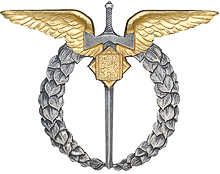




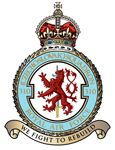
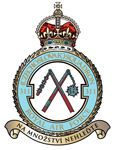
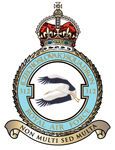
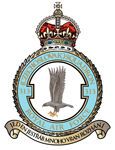


I was sorry to hear that Jan had died, my thoughts are with his family and friends.
But it was nice to read about him and for him to get the acknowledgement he deserves. As a child he was my hero as i sat and listerned to my Mum and Nan talk about him